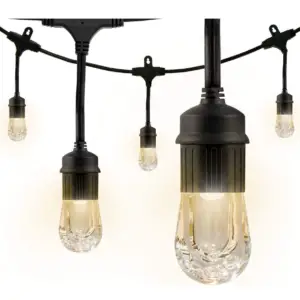
- 18 ft.
- 120 Volts
- 1400 Lumen

- 20-Foot
- 1 20
- Plastic
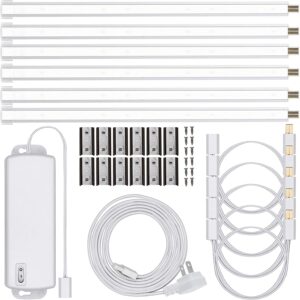
- 6 Pack
- 120 Volts
- 2040 Lumen

- 8.4 ounces
- 9.25 x 7.17 x 2.76 inches
- Exterior Machined

- 8.8 ounces
- 7.5 x 5 x 2.5 inches
- Exterior Machined
Choose the Best RV Awning Light
Table of Contents
Customer’s Choice: Best RV Awning Lights
19 users answered this survey. Please help us improve this review!
You’ve arrived to the correct spot if you’re seeking for the top RV awning lights. In this article, we will answer some of the most common questions about awning lights and provide some useful tips on how to choose the right ones for your needs. We will also discuss some of the benefits of using awning lights and recommend a few of our favorite models. So, whether you are just starting out in the world of RVing or you are looking for an upgrade, read on for all the information you need!
What are RV awning lights? This lighting may be any sort of illumination that can be connected to or hung from an RV awning. Many RVers use string lights or globe lights for their awnings, but there are also solar-powered options available.
Let’s have a look at some of the best alternatives available.
Enbrighten Classic LED Cafe Lights, Outdoor String Lights, Black, 18ft, 9 Impact Resistant Lifetime Bulbs, Premium, Shatterproof, Weatherproof, Indoor/Outdoor, Commercial Grade, 33307
 If you’re looking for an elegant way to light up your RV awning, look no further than these lights. These lovely string lights would look fantastic in any outdoor setting, and they’re tough enough to withstand even the roughest camping excursions.
If you’re looking for an elegant way to light up your RV awning, look no further than these lights. These lovely string lights would look fantastic in any outdoor setting, and they’re tough enough to withstand even the roughest camping excursions.
With nine impact-resistant lifetime bulbs, you’ll never have to worry about replacing a bulb again. And the black finish is perfect for adding a touch of class to your RV’s exterior.
Amazon Basics 360 LED Indoor-Outdoor Candy Cane Striped Rope Light
 At 40 feet long, these lights are sure to make a statement. And with 360 LEDs, you’ll have plenty of light to show off your holiday decor.
At 40 feet long, these lights are sure to make a statement. And with 360 LEDs, you’ll have plenty of light to show off your holiday decor.
These lights are also great for year-round use. They’re perfect for lighting up decks and patios for parties and barbecues. Or, use them to add a touch of ambiance to your backyard garden.
UltraPro 10in. Linkable LED Bright Strips, 6 Pack, 1650 Lumens, 2700K Warm White Light, Low Voltage, Under Cabinet Lighting, Strip Light, Flat Plug, 44415
 These LED light strips are the perfect addition to any RV awning. With 1650 lumens of brightness, they provide plenty of light for any activity.
These LED light strips are the perfect addition to any RV awning. With 1650 lumens of brightness, they provide plenty of light for any activity.
The linkable design makes it easy to add more lights if needed, and the flat plug makes them easy to install. These lights are also low voltage, so they won’t drain your battery.
Camco LED 16′ Blue and White Rope Light – RV and Camper Interior and Exterior Lighting for Outdoor Events and Special Occasions (53094)
 These lights are ideal for adding a little extra light and atmosphere to your RV awning or decorating it for special events. It is one of the finest RV awning lights on the market, and it’s simple to set up.
These lights are ideal for adding a little extra light and atmosphere to your RV awning or decorating it for special events. It is one of the finest RV awning lights on the market, and it’s simple to set up.
Just thread the rope through your awning track and you’re all set! These lights are also great for use inside your RV, as they provide plenty of light without being too harsh.
Camco LED 16′ Rope Light – RV and Camper Interior and Exterior Lighting for Outdoor Events and Special Occasions (53100), White
 This great product is perfect for lighting up your RV awning, and it even fits into your RV awning track! With its bright white light, it’s perfect for special occasions or outdoor events.
This great product is perfect for lighting up your RV awning, and it even fits into your RV awning track! With its bright white light, it’s perfect for special occasions or outdoor events.
And at only 16 feet long, it’s also great for smaller RVs or campers.
Buyer’s Guide
What Are the Best RV Awning Lights?
The information in this section is critical to understanding which ones are the best.
First, let’s start with some basics. RVs come in two diverse sorts: string lights and floodlights.
Both types have their own strengths and drawbacks, so it’s critical to pick the best one for your needs.String lights are usually cheaper and easier to install than floodlights, but they don’t provide as much light. Floodlights are more expensive and require more installation, but they provide brighter light. So, which is the best type for you? It depends on what you need them for.
If you want lights that will be used mostly for decoration or mood lighting, string lights are a wonderful choice. Because they provide light, you can use them for many purposes. If you want to adjust the amount of light in your room or don’t know how much light you’ll need, they’re an excellent choice. String lights are typically less expensive than floodlights, so they’re a good choice if you’re on a budget.
Floodlights are a better option if you want lights that will be utilized for mostly task illumination. They provide brighter light, so they’re great for cooking, reading, or any other activity where you need more focused light. Floodlights are more expensive than string lights, so they’re not the best choice if you’re on a budget. However, they typically last longer than string lights, so they may be a better investment in the long run. [1]
Do All RVs Come with RV Awning Lights?
Not all RVs are equipped with awning lights, although some RVs do include them. Some have them built-in, but the majority do not. There are a number of distinct approaches to accomplish this, and we’ll go over some of the most popular ones below.
One of the easiest ways is with clip-on lights. These are small, battery-operated lights that you can clip onto any surface. They’re easy to install and remove, so you can take them with you if you decide to move your RV or change your mind about where you want the lights.

Solar-powered lights, like solar-paneled versions, are another popular choice for adding lights. They are powered by the sun, so you don’t have to worry about batteries or plugs. Solar-powered lights are easy to install and they’re environmentally friendly, but they may not provide as much light as other types.
If you want permanently installed lights, then you can choose from several different types of fixtures. These include flush-mount lights, recessed lights, and surface-mount lights. Inside your RV’s awning, flush-mount and recessed lights are hidden from view. Surface-mount lights are mounted on the outside of your RV’s awning, so they’re more visible but also more vulnerable to damage.
Make sure you follow the manufacturer’s instructions for installation. This will help ensure that lights are installed correctly and safely.
String vs. LED Awning Lights
The two most common sorts of RV awning lights are string lights and LED (light-emitting diode) lights. The conventional choice is string lights, which are in a range of sizes, colors, and forms. They’re also very easy to find and relatively inexpensive.
The benefits of LEDs grow more apparent every year. They consume less energy, last longer, and produce a brighter light than incandescent bulbs. They’re also available in a wide range of colors, so you can really get creative with your lighting setup. However, LEDs aren’t as cheap as string lights.
So, which sort of light is best for you? It really depends on your personal preferences and needs. [2]
What You Should Know Before Buying RV Awning Lights
There are many factors you need to take into consideration before making your purchase.
Awning Lights for RVs
These lights are ideal for lighting and the atmosphere outside, and there are many different types to select.
RV Awning Light Power
The first thing you should think about when shopping for these lights is the power supply. There are three primary types of power sources for them: battery, solar, and AC-powered. Their various features and drawbacks must all be considered before making a selection.
Battery-powered lights are the most popular type. They’re easy to install and don’t require any wiring. Most importantly, they give you complete freedom to position your lights anywhere on the awning without having to worry about finding an electrical outlet. The downside of battery-powered lights is that they can be expensive to operate if you use them frequently. Solar-powered lights are a great eco-friendly option. They’re also very easy to install since you don’t need to worry about wiring. Solar-powered lights are slowly becoming more popular, but they’re not as widely available as battery-powered lights yet. The biggest advantage of solar-powered lights is that they’re completely free to operate once you’ve installed them. However, they’re not as bright as battery-powered or AC-powered lights, so you may need to use more of them to get the same level of illumination. AC-powered RV awning lights are the most traditional type. They require wiring and professional installation, but they’re very bright and long-lasting. AC-powered lights are ideal if you have an RV with a built-in electrical system. However, they can be expensive to operate if you use them frequently.
Awning Lights Power Source
Most awning lights are LED and run off of 12-volt DC power, which you can get from your RV’s battery.
Some models come with solar panels that allow you to recharge the batteries while you’re on the road. If you decide to go the solar route, just keep in mind that you’ll need to position the panels in a sunny spot (preferably south-facing) during the day so they can soak up some rays. You may also want to invest in a quality set of batteries so they don’t die on you in the middle of the night.Awning Light Style
There are three basic types: string lights, lanterns, and spotlights. Each has its own unique benefits that can make your RVing experience more enjoyable.
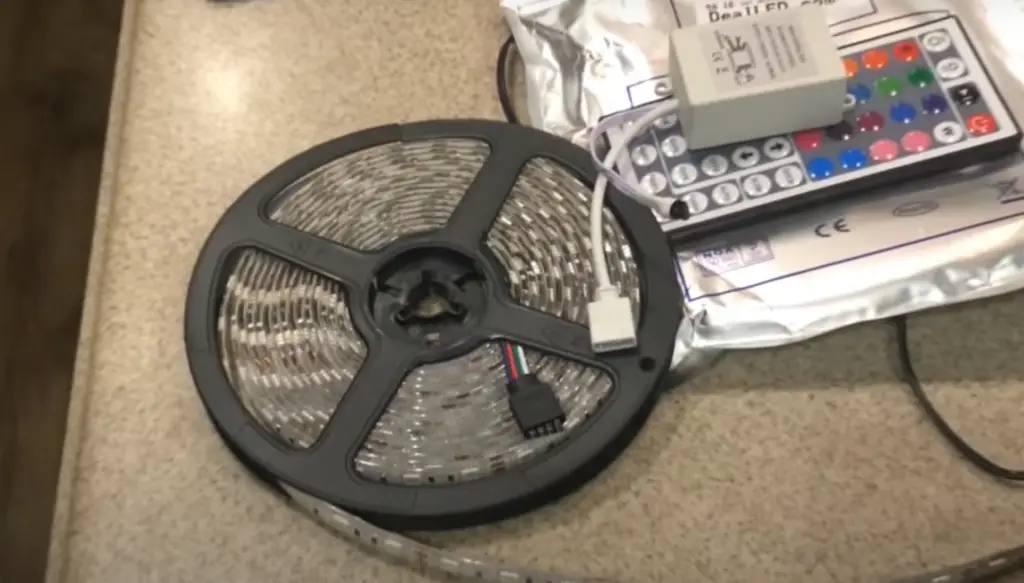
String lights are the most popular type of awning light. They are easy to install and provide a warm, inviting atmosphere.
Lanterns offer more light than string lights and can be hung from the awning or placed on tables and other surfaces.
Spotlights are ideal for task lighting and can be directed to specific areas as needed. no matter what style you choose, make sure your awning lights are designed for outdoor use and can withstand weather conditions. Also, look for energy-efficient options to help save on power costs.
If you’re looking for a specific style of awning light, there are many options to choose from. For example, globe string lights are a popular choice for their vintage look. Another popular choice is LED string lights, which use less energy and last longer than standard incandescent bulbs. If you want something with a more modern look, consider rope lights or icicle lights. And for a touch of whimsy, solar-powered fairy lights are always a charming addition to any outdoor space.
There is an RV awning light to fit your requirements, no matter what your personal style is.
Function
The lights should be able to do more than just look good. You also want them to increase the functionality of your RV awning. Look for features such as remote control, motion sensor, and dimming capabilities. These will all come in handy at one point or another and make using your awning that much more enjoyable. String lights and floodlights are the two most common types of RV awning lighting. String lights are ideal for illuminating an area as part of the ambiance. They can be strung from the awning fabric itself. Floodlights, on the other hand, provide more focused light and are great for task lighting (like cooking or reading) or security purposes. The majority of RV awning lights will be LED or incandescent. LED bulbs are more expensive but last much longer and use less power. Incandescent bulbs are cheaper but don’t last as long and use more power. [3]
When it comes to selecting the finest RV awning lights for your needs, there are a few factors to consider. First, consider what type of lighting you need. Are you looking for ambient lighting or task lighting? Second, think about what features would be most useful to you. Do you want remote control or dimming capabilities? Finally, decide if you want string lights or floodlights. For providing ambient illumination, string lights are ideal, while floodlights are better for task lighting or security purposes. Whichever type you select, make sure they are durable and weatherproof so they can withstand the elements.
What Should an RV Awning Light Have
When it comes to finding the greatest RV awning lights, there are a few factors to consider. First, they should be bright enough to light up your campsite so you can see them at night. Second, they should be easy to install and come with all the necessary hardware. Third, they should be durable and weather-resistant so they can withstand the elements.
Here are some other things to consider:
- The type of bulb: There are two main types of bulbs: incandescent and LED. Incandescent bulbs are less expensive, but they consume more energy. LED bulbs, on the other hand, are more costly but require less electricity and last longer.
- The number of bulbs: awning lights can have one, two, or three bulbs. More bulbs mean more light, but also more weight and more space taken up by the light fixture.
- The size of the lights. Some are small and unobtrusive, while others are larger and may stick out from the side of your RV. Choose the size that best fits your needs.
- The price: RV awning lights range in price from around $20 to $100. Choose the light that fits your budget and needs. [4]
Benefits of a Good RV Awning Light
As you probably know, an RV awning is a great way to enjoy the outdoors while still being protected from the elements. But did you know that a good RV awning light can make your experience even better?
Here are just some of the benefits of having a good RV awning light:
They make a great party accomplice
An RV awning light can really set the mood for a party. They can help you see what you’re doing, and they also look great.
They provide functional lighting
Of course, the main purpose of an RV awning light is to provide functional lighting. This can be helpful when you’re trying to find your way around in the dark, or when you need to do some repairs.
They can be used as emergency lights
In case of an emergency, your RV awning light can be used as an emergency light. This can be a lifesaver if you find yourself in a situation where you need to evacuate your RV in the middle of the night.
They make it easy to set up your campsite
Once you’ve found your campsite, an RV awning light can make it easy to set up your camp chairs and table. You’ll be able to see what you’re doing, and you won’t have to worry about tripping over things in the dark.
They provide security
An RV awning light can also help to provide security. If someone is trying to break into your RV, the light will deter them and make it easier for you to see what’s going on.
They help you save money on power
RV awning lights are very energy-efficient. This means that you’ll save money on your power bill each month.
They’re easy to install
Installing an RV awning light is a fairly simple process. You can usually do it yourself in just a few minutes.
They’re low maintenance
Once you’ve installed your RV awning light, there’s not much else you need to do. They’re very low maintenance and will last for many years with proper care.
What to Consider When Buying RV Awning Lights
First, think about the type of lightbulb you want. LED bulbs are becoming increasingly popular because they’re more energy-efficient than traditional incandescent bulbs. However, they can be more expensive upfront. If you’re looking for a more budget-friendly option, consider CFL (compact fluorescent) bulbs.
Next, consider the size and shape of the light fixture. You’ll want to make sure it’s compatible with your RV’s existing electrical system and that it will fit in the space you have available. Pay attention to the wattage rating as well; higher wattage means brighter light, but it also consumes more energy.
Finally, think about the style of light fixture you want. There is a wide variety, from traditional globe lights to string lights and everything in between. Choose the style that best fits your needs and preferences.
How Much You Will Be Using Them
One important factor to consider is how often you’ll be using them. If you only need occasional lighting, such as for checking the RV’s exterior at night or setting up a small campfire, then battery-operated lights may be the best option. They’re easy to set up and take down, and you don’t have to worry about connecting them to your RV’s electrical system.
On the other hand, if you’ll be using RV awning lights on a regular basis, then it’s worth investing in a more permanent solution. Hardwired RV awning lights can be connected directly to your RV’s electrical system, so they’re always ready to use. They’re also generally more durable than battery-operated lights, so they can withstand the rigors of frequent use.
Power Level
Another important consideration is the power level and brightness of the RV awning lights you choose. If you only need a small amount of light for tasks like reading or cooking, then you can get by with lower-wattage bulbs. However, if you need more light for activities like playing games or entertaining guests, then you’ll want to choose higher-wattage bulbs.
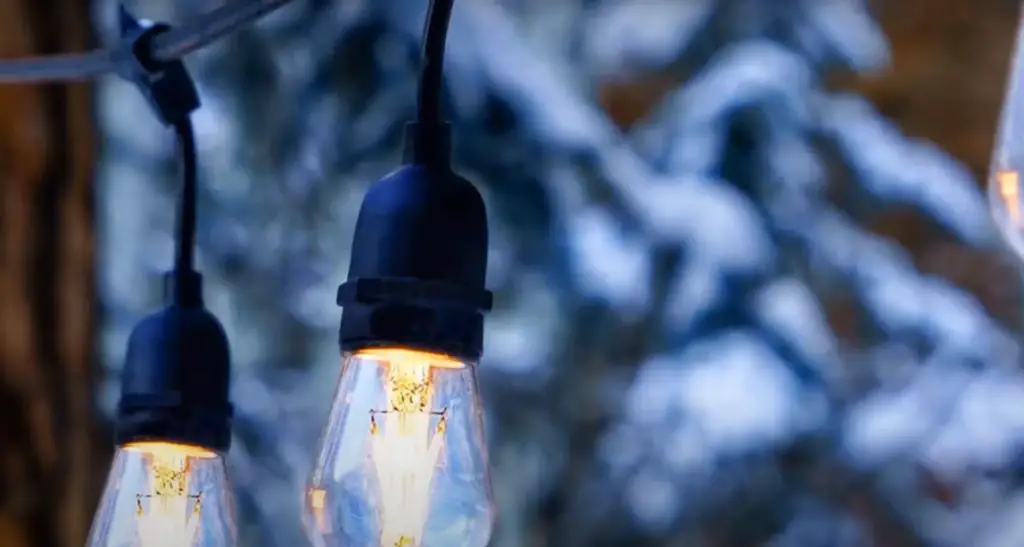
Similarly, if you’re looking for accent lighting rather than task lighting, then you may want to consider string lights or other decorative lights. These lights are usually lower in wattage but can provide a fun and festive atmosphere.
Control of the color
Now that we’ve gone over the types of RV awning lights available to you, let’s talk about how you can control them.
Almost all RV awning lights will come with a remote, which makes it easy to change the color or turn them off when you don’t need them.
Some even have built-in timers so you don’t have to worry about forgetting to turn them off.
In terms of brightness, most RV awning lights are quite bright, but there are some that offer different levels of brightness.
As for effects, some lights can flash or strobe while others can gradually change colors.
It really just depends on what you’re looking for and what you think will look best for your RV.
Mounting System
Most of the awning lights in the market come with a mounting system. This makes it easy to set up and take down your lights. The most popular type of mounting system is the stake mount. This is where you insert the light into the ground like you would a tent stake. Another popular type is the grommet mount. This is where you insert the light through a hole in the fabric of your RV awning.
In this case, you can use zip ties or bungee cords to secure your lights to the awning fabric. Just be sure that whatever method you use, it’s secure and won’t damage your awning.Electrical Hookups
Most RVs come with an electrical hookup that lets you plug into a campground’s power supply. This is usually a 120-volt, three-pronged outlet. A more powerful 240-volt connection is required to run air conditioners and other high-draw equipment in some modern RVs.
If your RV doesn’t have an electrical hookup, you can still enjoy the great outdoors by using a portable generator to power your RV’s lights and appliances. Simply follow the manufacturer’s recommendations for safe operation.
Choosing an awning light is one of the most crucial decisions to make when purchasing an RV since it will determine whether or not your electrical system can handle it.
You’ll also need to know the wattage rating of the light. This is how much power the light will draw from your RV’s electrical system. The higher the wattage, the brighter the light will be.
Finally, you’ll need to know the type of bulb that is used in the light. Incandescent bulbs and LED lamps are the two most popular varieties of bulbs. Incandescent bulbs are more affordable, but they consume much more power than LED bulbs. [5]
Types of RV Awning Lights
There are a few distinct types of this light available, depending on your demands and preferences. The most popular type is the LED light strip, which is easy to install and provides bright, consistent lighting. If you’re looking for something with a little more personality, you can also find lights in fun shapes like stars or flowers. No matter what type you choose, read the instructions carefully before installation to avoid any accidents.
Solar RV Awning Lights
Awning lights for RVs are among the most valuable methods to brighten up your campsite. They provide bright, reliable light without using any electricity. Because solar lights are driven by the sun, they require no upkeep.
Types of Solar RV Awning Lights
String Lights
String lights and panel lights are the two most popular types. String lights are simple to set up and operate, and they provide a pleasant warm glow to your campsite. String lights are made of LED bulbs, which are quite energy-efficient.
Panel Lights
Panel lights are more powerful and efficient than string lights, but they’re also more expensive. Panel lights are great for lighting up a large area, such as a campsite or RV park. Most panel lights have multiple settings, so you can adjust the brightness to suit your needs.
Choosing the Best Solar RV Awning Lights
There are several factors to consider. First, decide what type of light you need: string lights or panel lights. Then, consider how much light you need. Any type of awning light will suffice if you’re just searching for accent lighting. However, if you require more light for activities such as preparing food or reading, panel lights are a superior choice. Finally, consider your budget. Solar lights range in price from $20 to $200, so there’s sure to be a set that fits your needs and budget.
What Are the Best Solar RV Awning Lights?
Now that it’s time to look at some of the best alternatives available.
Camco LED String Lights: energy-efficient LED bulbs, and they come in a variety of hues.
RV LED Awning Lights: These panel lights are extremely bright and feature a variety of options.
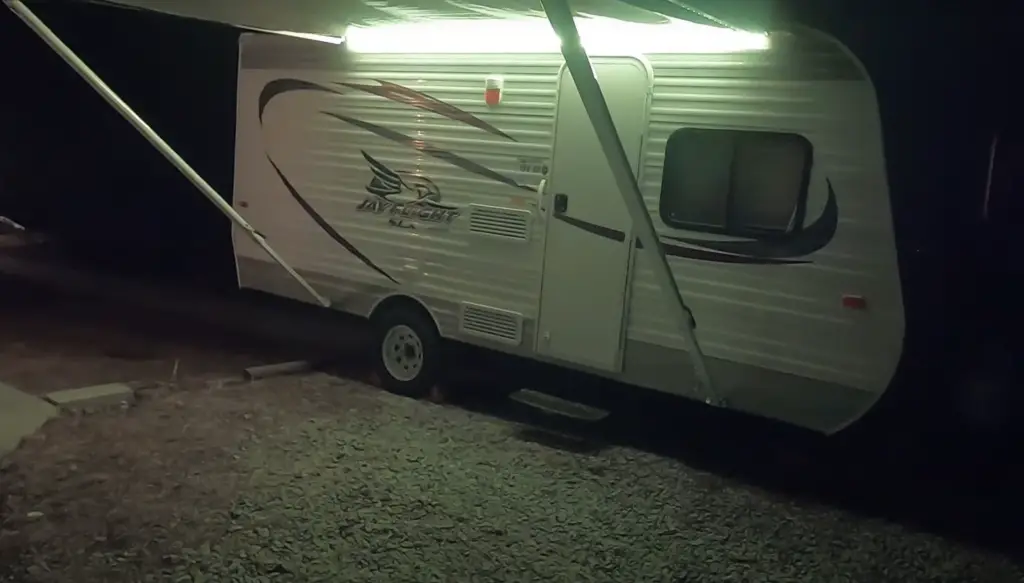
Ledgle LED String Lights: composed of long-lasting, weather-resistant materials.
LED Lights
LED lights are the way to go if you’re searching for the finest lights. LEDs, on the other hand, are more energy-efficient and last far longer than incandescent bulbs. Plus, there are now many different style options available when it comes to LED RV awning lights. You may choose from several designs, including those that resemble traditional string lights or something more modern and minimalist.
Not all LEDs are created equal. There are some lower-quality LEDs on the market that aren’t as bright or durable as others. So be sure to do your research and choose a reputable brand.
Rope Lights
If you’re seeking for a collection of lights that are simple to install and provide a whimsical touch to the RV awning, rope lights are the way to go. Rope lights are great for accenting the edge of your awning or wrapping around support poles. They come in a variety of colors, so you can choose the perfect hue to complement your RV’s exterior. Plus, they use very little energy, so you can keep them on all night without draining your battery.
To install rope lights, simply measure the length you need and cut the strand to size. Then, use the included clips to attach the lights to the underside of your awning fabric. Be sure to use enough clips to keep the lights secure, especially if you’ll be traveling down the road.
Once your rope lights are in place, plug them into an outdoor extension cord and turn them on. You can use a timer to control when they’re on and off, or you can operate them manually.
How to Install LED Strip Lights on Your RV Awning
Installing LED strip lights is a quick and simple method to give your campsite more illumination and atmosphere. Here are a few tips on how to get started:
First, you’ll need to gather your materials. You’ll need an LED light strip (we recommend one that’s waterproof and has adhesive backing), a power drill, screws, wire connectors, and wire ties.
Next, you’ll want to clean the area where you’ll be attaching the light strip. This will ensure that the adhesive backing adheres appropriately.
Then, measure and mark where you want the light strip to go. We recommend placing it along the edge of the awning so that it casts light downward.
Now, you’ll need to drill holes for the screws. Be sure to drill through both the awning fabric and the aluminum support beam beneath it.
Once the holes are drilled, remove the adhesive backing from the light strip and attach it to the awning. Start at one end and work your way down.
Finally, use wire connectors to join the positive (red) wires together, and then do the same with the negative (black) wires. You can then tuck any excess wire into the space between the awning fabric and support beam.
Selecting LED Strip Lights for an RV Awning
You should consider a few things. First, consider the size of your awning and how much light you’ll need. Also, think about what type of look you’re going for. Do you want bright white light or something softer and more ambient?
There are also some practical considerations to keep in mind.
And be sure to get one that’s rated for outdoor use so that it can withstand the elements.Installing LED Strip Lights
One of the most frequent methods to illuminate an RV is with lights. They’re easy to install, relatively inexpensive, and provide some extra light to your rig.
Here are some tips:
- Before you start, make sure you have all the necessary tools and materials. You’ll need a drill, screws, wire cutters/strippers, and zip ties.
- Start by attaching the mounting bracket to the underside of the awning using screws or adhesive tape (depending on the type of bracket).
- Thread the power cord through the mounting bracket and up into the awning.
- Connect the strip to the power cord, making sure that the positive and negative wires are connected properly.
- Secure the LED strip in place using zip ties or adhesive tape. Make sure that there is enough slack in the power cord so that you can easily open and close the awning without disconnecting anything.
- Finally, plug in the power cord and turn on the lights!
Wiring and Using LED Strip Lights Under an RV Awning
Wiring and electricity in RVs might be a little challenging. There are a few things to bear in mind.
First, make sure you have the right kind of LED lights. There are two main types: 12-volt and 120-volt. The 12-volt strips are the ones you want for your RV; they’re easy to install and don’t require any special wiring. 120-volt strips are more for home use and can be a bit more complicated to install (and dangerous if not done correctly).
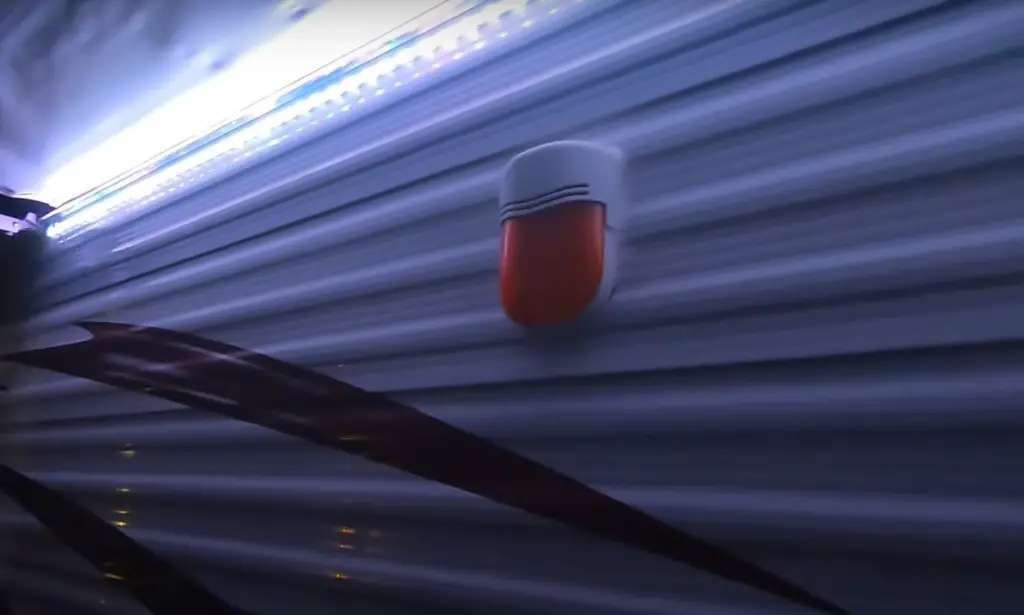
If you’re concerned about the adhesive on traditional LEDs, it’s easy to remove and replace them with our peel and stick strips. Just make sure they’re not in any danger of getting wet; moisture and electricity don’t mix well!
It’s time to enjoy the extra light and ambiance they provide.
Alternatives to Installing LED Strip Lights
There are several options that will provide the same amount of light. These include:
- Solar lights: Solar lights are an excellent choice for replacing traditional LED strip lights because they require no wiring or power to operate. They are also very easy to install and can be moved around easily if you need to change your configuration.
- Battery-operated lights: Battery-operated lights are another great alternative to LED strip lights. They’re simple to install, don’t require wiring or electricity, and can be done by anybody.
- Propane lights: Propane lights are a great alternative because they are very easy to install and require no wiring or electricity.
All these lights come in different sizes, so you can choose the ones that best fit your needs.
No matter which type of light you choose, be sure to follow the manufacturer’s instructions carefully to avoid any accidents. Also, be sure to test your lights before you leave on your trip to make sure they are working properly.
FAQ
Are boogey lights worth it?
This is a difficult question to answer. It depends on how much you value your time and money. If you are someone who enjoys DIY projects, then installing your own lights may be a fun challenge for you. However, if you would prefer to spend your time relaxing on your vacation, then it may be worth it to invest in a quality set of lights. Ultimately, the decision is up to you!
Boogey lights are a type of LED light that is often used for decorative purposes. They are available in a variety of colors and can be controlled via remote control. Many people enjoy using boogey lights to decorate their RV, as they add a touch of personality to the vehicle. [6]
You will need to decide what purpose you would like the lights to serve. Are you looking for purely decorative lights, or do you need Lights with a utility function? There are many different types of boogey lights on the market, so it is important to know what you want before making a purchase.
How do I put lights on my RV awning?
The process of installing is actually quite simple and can be done in just a few minutes. All you need is a screwdriver and some basic knowledge of how to use it.
First, find the location on your RV where you want to install the light. It’s important to choose a spot that’s close to an electrical outlet so you can easily plug in the light. Once you’ve found the perfect spot, use the screwdriver to remove any screws or bolts that are holding the old light in place.
Next, take your new light and hold it up to the hole where the old one was. If everything lines up correctly, then go ahead and screw it in place. Be sure to not overtighten the screws, as this could damage the light.
Finally, plug in the light and turn it on to test it out. You may need to adjust the positioning of the light until you get the perfect angle. And that’s it! You’ve successfully installed your new light.
If you’re still having trouble, there are plenty of instructional videos online that can walk you through the process step-by-step.
Can you put lights on a retractable awning?
Yes! You may turn on a retractable awning and there are several methods to accomplish it. One popular way is to use string lights. You can either drape them across the top of the awning or along the sides. Another option is to use clip-on lights that attach directly to the fabric of the awning. [7]
If you want something more permanent, you may also add LED strip lights. These are easy to install and give off a bright, even light. They’re also very energy-efficient, so they won’t run up your electric bill.
How do you replace an RV-led awning light?
The first thing you’ll need to do is remove the old light. To do this, you’ll need to unscrew the light from the awning. Once the old light is removed, you can then screw in the new light. It’s critical to make sure the new light is tightly secured while driving so it doesn’t come loose.
Another thing to keep in mind is the type of bulb that you use. There are two main types of bulbs: incandescent and LED. Incandescent bulbs are cheaper but they don’t last as long as LED bulbs. LED bulbs are more expensive but they last a lot longer. If you’re not sure which type of bulb to use, it’s best to consult with an expert.
What voltage are RV awning lights?
Most RV awning lights are 12 volt, but there are also some 24 volt options available. [8]
You’ll need to know the voltage of your particular model in order to purchase the right bulbs.
Can I leave my RV awning out in the rain or snow?
This is a common question, and the answer is… maybe. It depends on the type of awning you have. If you have a manual awning, it’s best to take it down in bad weather. Many automatic awnings have sensors that will retract the awning if it senses wind or precipitation. However, it’s always best to check your manufacturer’s instructions.
Another thing to consider is whether or not your campsite has trees overhead. If there are trees, limbs could fall and damage your awning. It’s also critical to make sure the RV is level so that water doesn’t pool on the awning.
How do you wire-led awning lights?
The first step is to determine where you want to place your lights and how many you need. Once you have a general idea, it’s time to start installing your LED lights.
Most importantly, always consult an electrician before working with any kind of wiring! This will ensure that the job is done safely and correctly.
Start by stripping about ½ inch of insulation off the end of the two-conductor cable using a wire stripper. Next, twist the stranded copper wires together clockwise until they’re tight.
Can you use regular light fixtures in an RV?
Yes, you may utilize standard light fixtures in an RV. However, there are a few things to keep in mind. First, make sure the fixture is designed for outdoor use. Second, check the wattage rating to ensure it doesn’t exceed the capacity of your RV’s electrical system. Finally, be sure to secure the fixture so it doesn’t become a hazard during travel.
Useful Video: Adding LED lights to RV Awning for $15-$30
Conclusion
It’s time to select the appropriate light for your needs after you’ve identified what to search for in RV awning lights and some of the greatest alternatives on the market. Consider the size, price, and type of bulb you need before making your final decision. With so many great options available, you’re sure to find the perfect RV awning light for your needs. Thanks for reading!
References:
- https://trailervalet.com/best-rv-awning-lights/
- https://www.getawaycouple.com/what-are-the-best-rv-awning-lights/
- https://rvshare.com/blog/rv-awning-lights/
- https://theroadtripster.com/rv-awning-lights/
- https://rvlifestyle.com/best-rv-awning-lights/
- https://www.trustpilot.com/review/boogeylights.com
- https://sunairawnings.com/led-awning-lighting
- https://www.travelswithted.com/12-volt-led-lights-for-rvs/


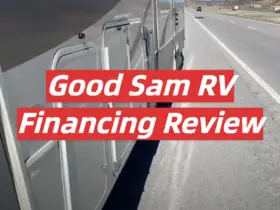
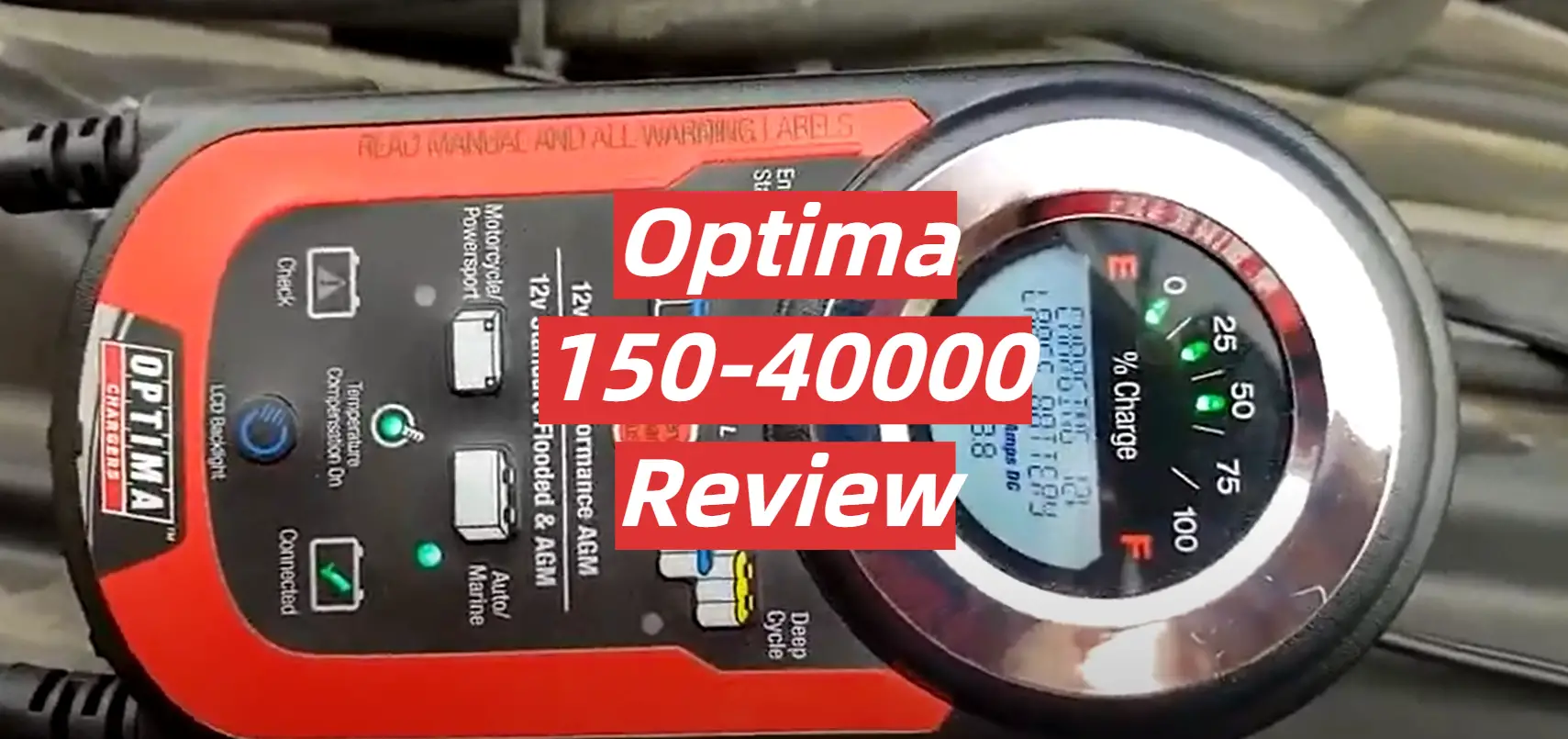
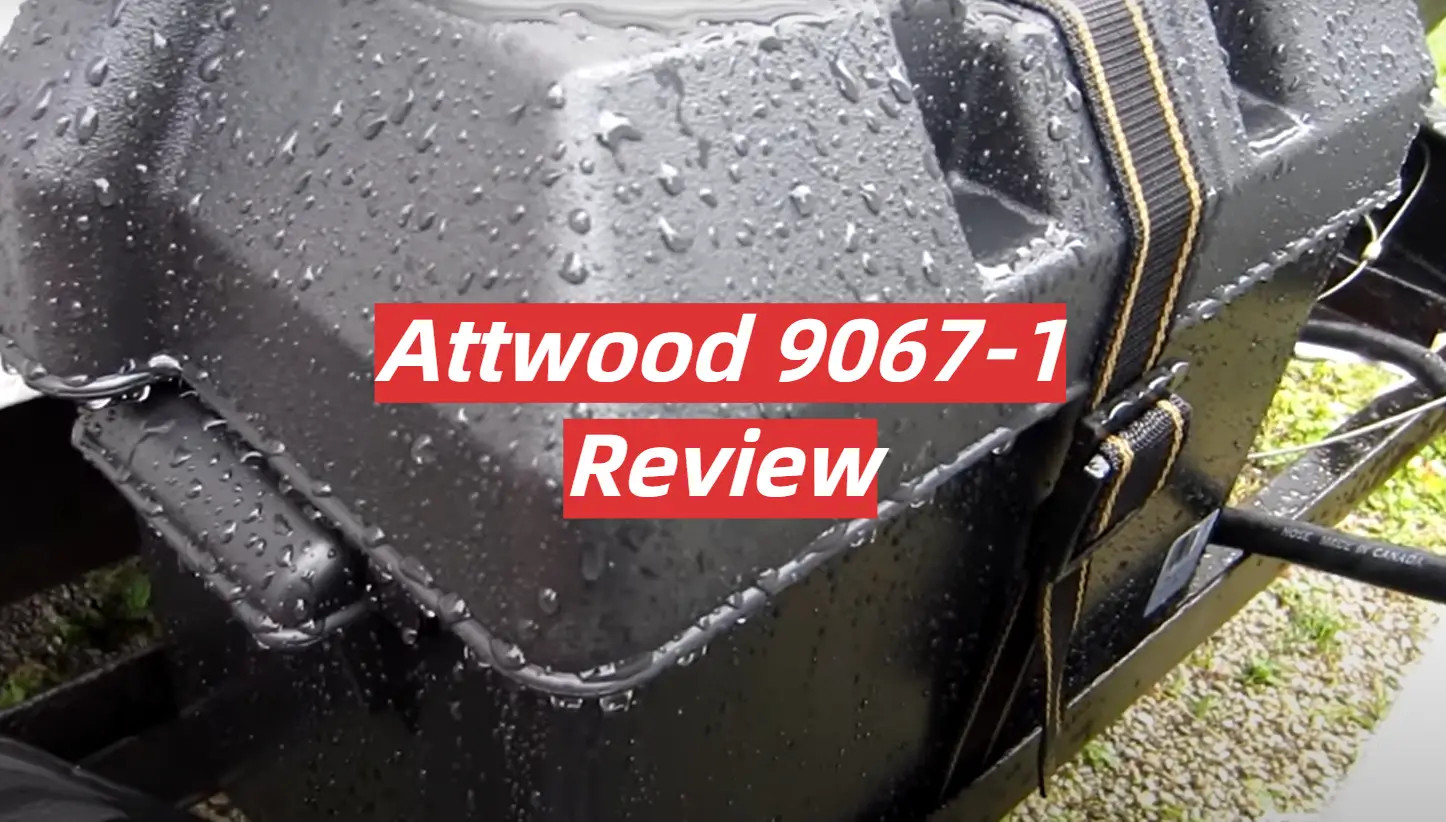
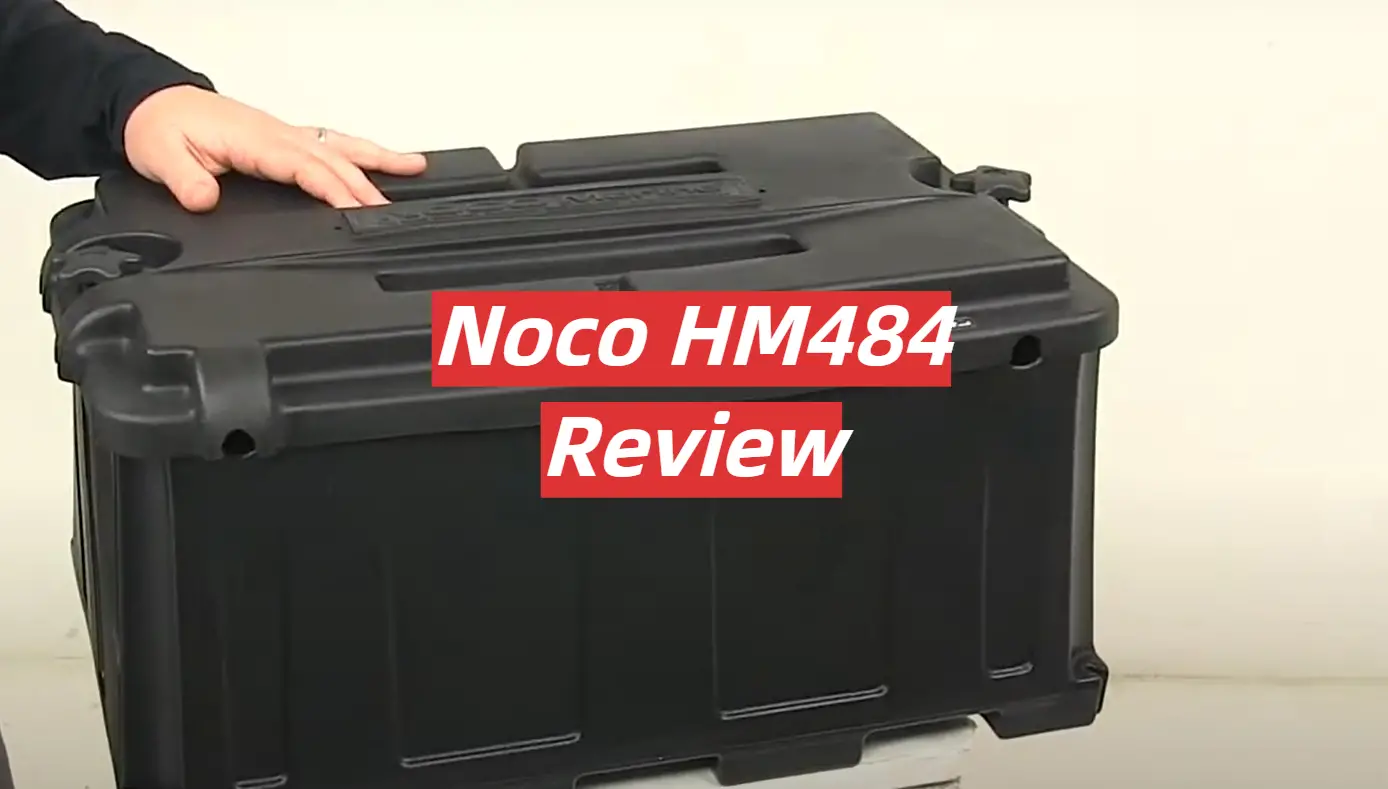
Leave a Reply